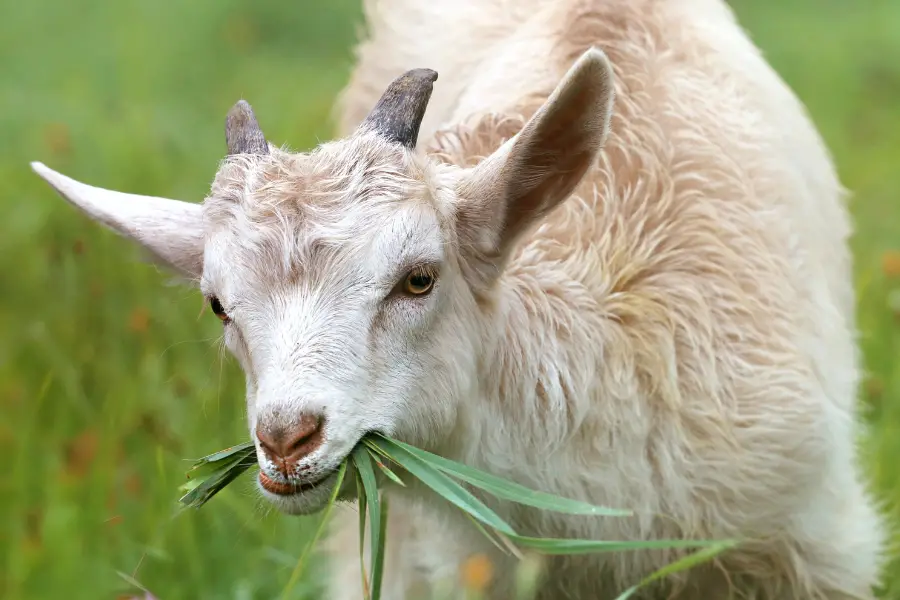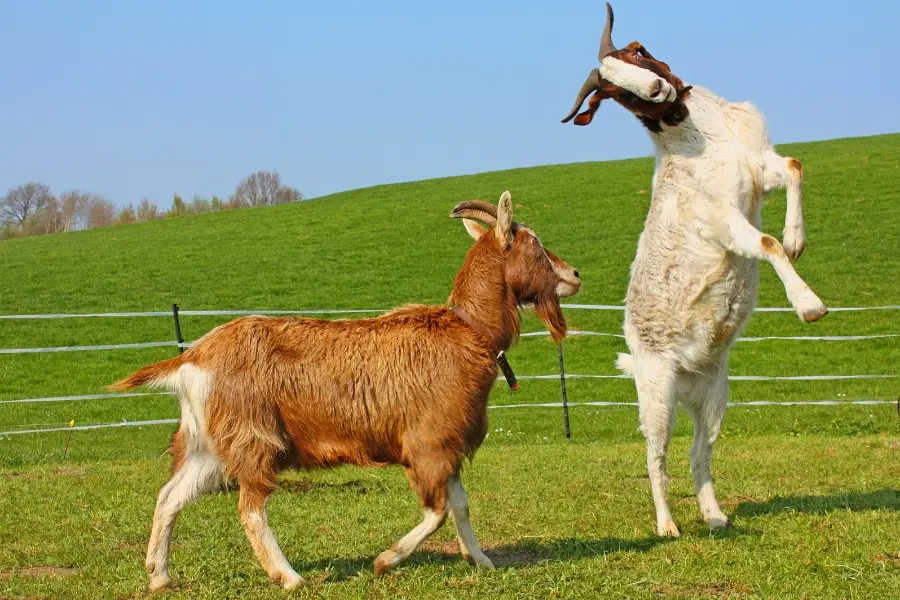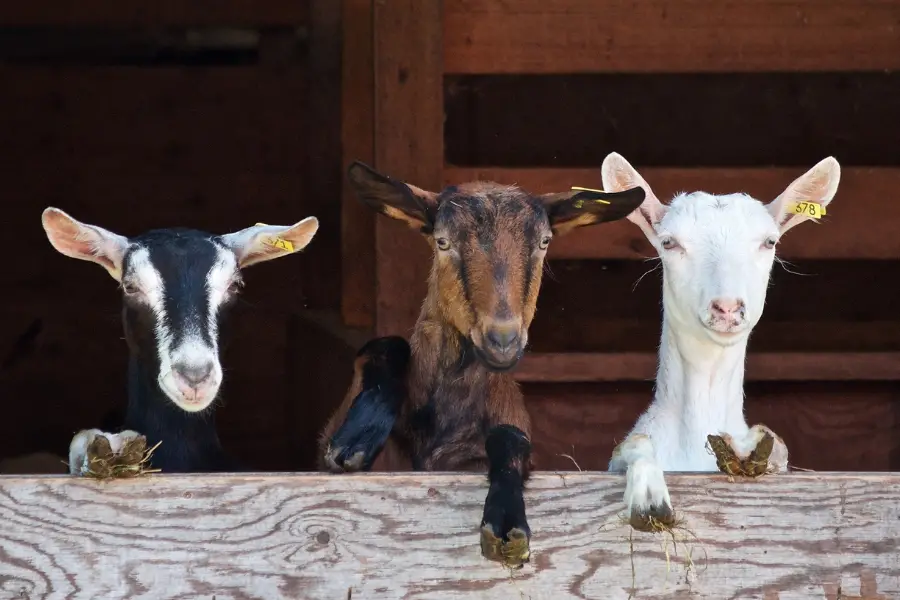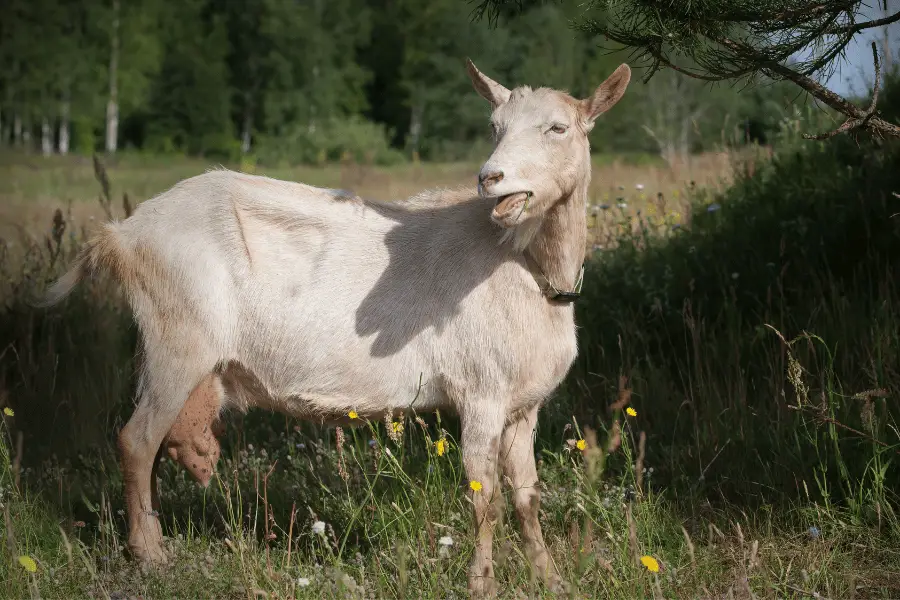
In this complete guide to goat udder problems, we describe udder diseases and conditions that are common to goats. You should regularly examine each animal in your heard to assess its health. And that includes taking a close look at goat udders. If you’re a new farmer, you should be aware of the different udder problems in goats so you identify them and be prepared for treatment!
Table of contents
- Possible causes of Goat Udder Swelling
- Congested / Hard Udder in Goats
- Goat Swollen Udder not Pregnant
- Goat Udder Swollen On One Side
- Goat Udder Edema
- Sores on Goat Udder
- Caseous Lymphadenitis in Goats Udder
- Texas A&M AgriLife Extension Official Video: Caseous Lymphadenitis in Goats
- Udder Development in Goats
- Photo Credits
Possible causes of Goat Udder Swelling
Some common causes of goat udder swelling are mastitis, pregnancy, injury to the udder, hormonal imbalances, or an underlying health issue. Other factors like genetics, poor milking practices, and environmental stress can also lead to udder swelling in goats.
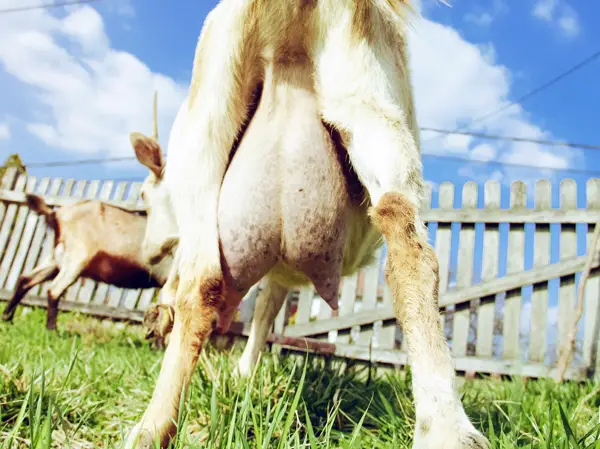
Mastitis
Mastitis is a bacterial infection of the mammary gland in goats that can cause inflammation, swelling, and pain in the udder. It is one of the most common health problems affecting dairy goats. The infection can be caused by a variety of bacteria, including Streptococcus agalactiae, Staphylococcus aureus, and Escherichia coli.
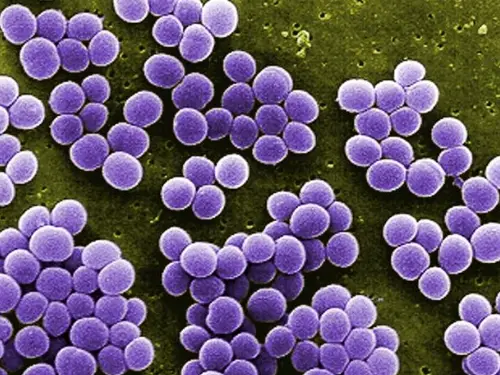
Symptoms of Mastitis in Goats
Symptoms of mastitis in goats include swelling and redness of the udder, clots in the milk, a decrease in milk production, and fever. In severe cases, the goat may experience pain, depression, and anorexia.
Mastitis in Goats Treatment
Mastitis can be treated with antibiotics, but it’s important to seek veterinary care to determine the cause and determine the most appropriate course of treatment. To prevent mastitis in goats, it’s important to practice good hygiene when milking and to keep the udders clean and dry. Providing proper nutrition, a stress-free environment, and prompt treatment of any injuries to the udder can also help prevent mastitis in goats.
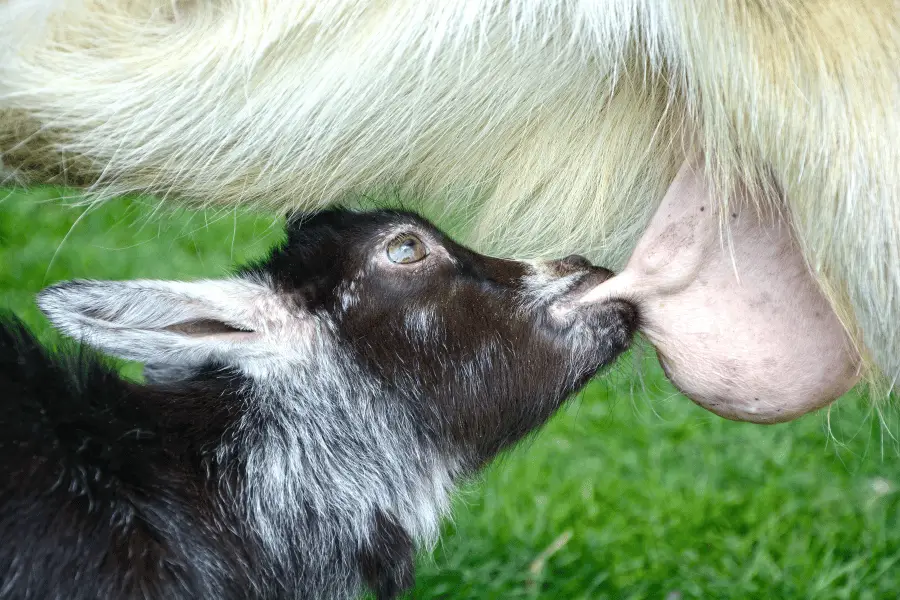
Injury to the Goat Udder
Injury to the udder may be due to aggressive feeding by a kid. This is more common when a goat is feeding more than one kid.
Congested / Hard Udder in Goats
Congested or hard udders in goats can be caused by a build-up of milk, blockage of the milk ducts, infection, or mastitis. If a goat’s udder is congested or hard, it’s important to seek veterinary care to determine the cause and treat any underlying health issues.
What causes hard udder in goats? Some of the common causes of congested udders in goats include:
Overmilking
If a goat is overmilked, the udder may become congested with milk.
Poor milking practices
Incorrect milking techniques, such as pulling or squeezing the teats too hard, can cause the udder to become congested.
Infections
Bacterial infections, such as mastitis, can cause the udder to become congested and painful.
Blockages
Blockages in the milk ducts, such as from ingrown hairs or infection, can cause the udder to become congested.
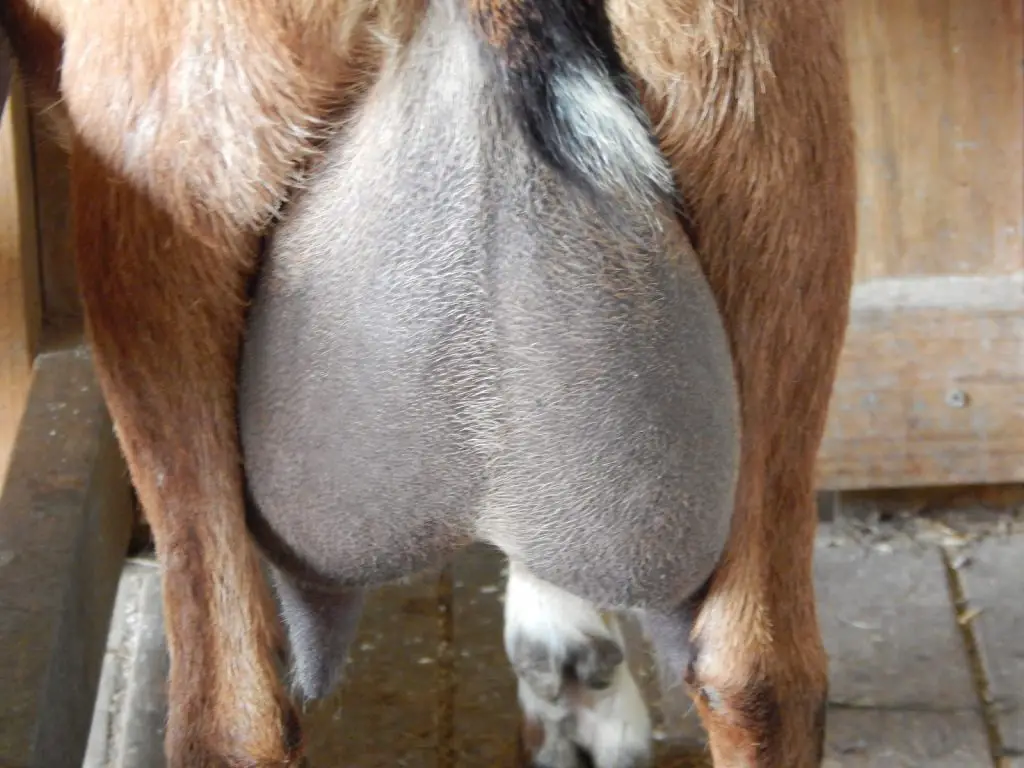
Hormonal imbalances
Hormonal imbalances, such as those associated with pregnancy or lactation, can cause the udder to become congested.
Environmental stress
Environmental stress, such as extreme temperatures, can cause the udder to become congested.
Goat Hard Udder Treatment
If you notice that your goat’s udder is congested, it’s important to seek veterinary care as soon as possible to determine the cause and determine the best course of treatment. Preventative measures, such as proper milking practices, proper hygiene, and a stress-free environment, can help reduce the risk of congested udders in goats.
Goat Swollen Udder not Pregnant
Swollen udders in non-pregnant goats can be caused by a variety of factors, including hormonal imbalances, mastitis, an injury to the udder, or an underlying health issue. It’s important to seek veterinary care to determine the cause and treat any underlying health issues.
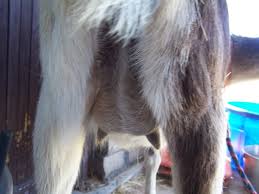
Goat Udder Swollen On One Side
If a goat’s udder is swollen on one side, it could indicate an infection or injury on that side. This can be a serious issue and requires immediate veterinary attention.
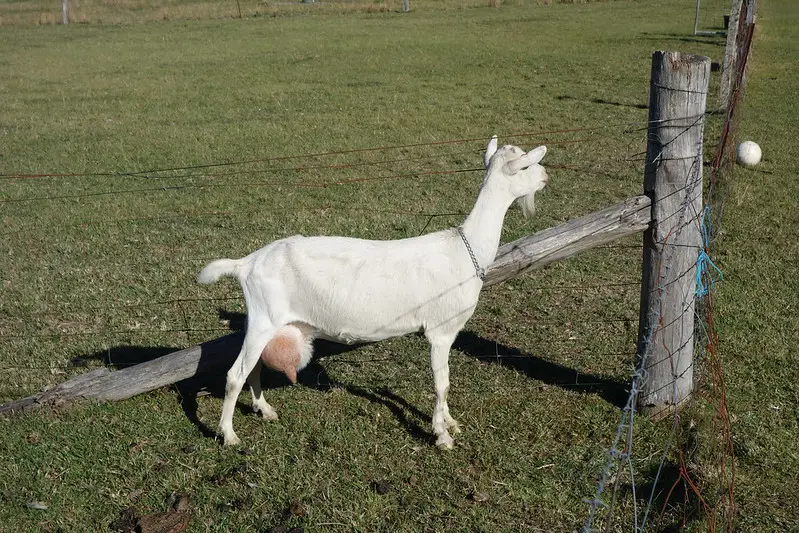
Goat Udder Edema
Goat udder edema is a condition in which the udder becomes swollen due to the accumulation of fluid. This can be caused by a variety of factors, including poor nutrition, hormonal imbalances, stress, or an underlying health issue. This condition is also known as udder edema or water bag in goats.
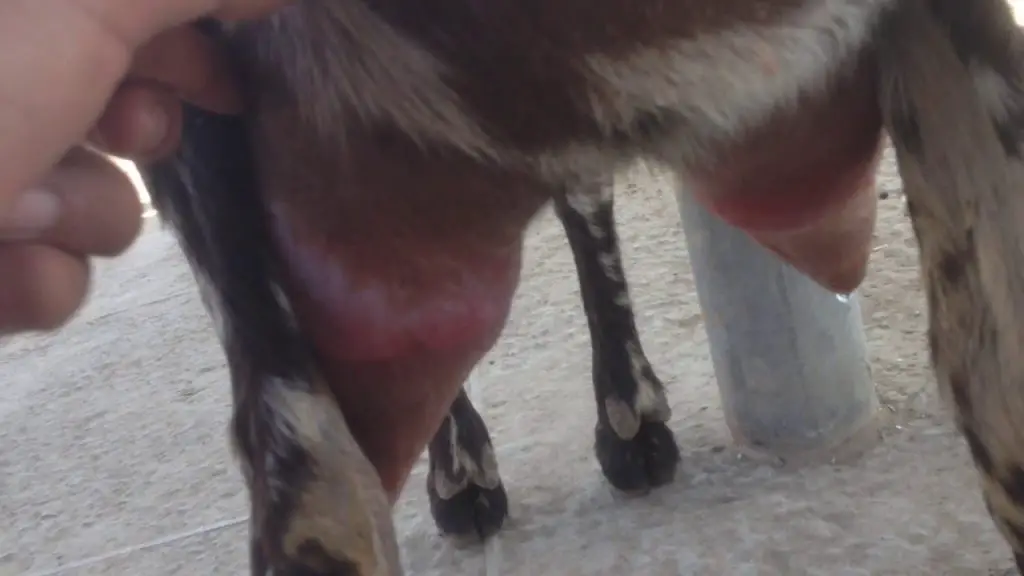
Symptoms
Symptoms of goat udder edema include swelling and puffiness of the udder, an increase in the size of the udder, and a decrease in milk production. In severe cases, the udder may become so swollen that it becomes difficult for the goat to walk.
Goat Udder Edema Treatment
Goat udder edema can be treated by addressing the underlying cause. For example, if the edema is caused by poor nutrition, providing the goat with a balanced diet can help resolve the issue. If the edema is caused by an underlying health issue, such as a hormonal imbalance, veterinary treatment may be necessary.
Preventative measures, such as providing proper nutrition and reducing stress, can help reduce the risk of goat udder edema. It’s also important to practice good hygiene when milking, to keep the udders clean and dry, and to promptly treat any injuries to the udder.
Sores on Goat Udder
Goat udder sores can be caused by a variety of factors, including poor milking practices, injury, or infection. It’s important to keep the udder clean and to seek veterinary care if sores develop.
Sores can also be presents on the teats, which are how the kids access the milk in the udder. If the teats are sore, then the nanny will be reluctant to nurse, which can lead to starvation in the kids. Your vet should be consulted. One common cause can be an infection by the Orf virus, that causes sore mouth in goats.
Caseous Lymphadenitis in Goats Udder
Caseous Lymphadenitis in Goats (also called CL in Goats) is a serious, contagious, bacterial infection that affects the lymph nodes, mammary glands, and other organs in goats. CL can cause swelling and abscesses in the udder, and requires veterinary treatment to prevent the spread of the infection to other goats.
Caseous Lymphadenitis in Goats Causes
Caseous Lymphadenitis is caused by the bacterium Corynebacterium pseudotuberculosis and can be transmitted from goat to goat through contaminated equipment or by direct contact with infected lymph nodes or discharge.
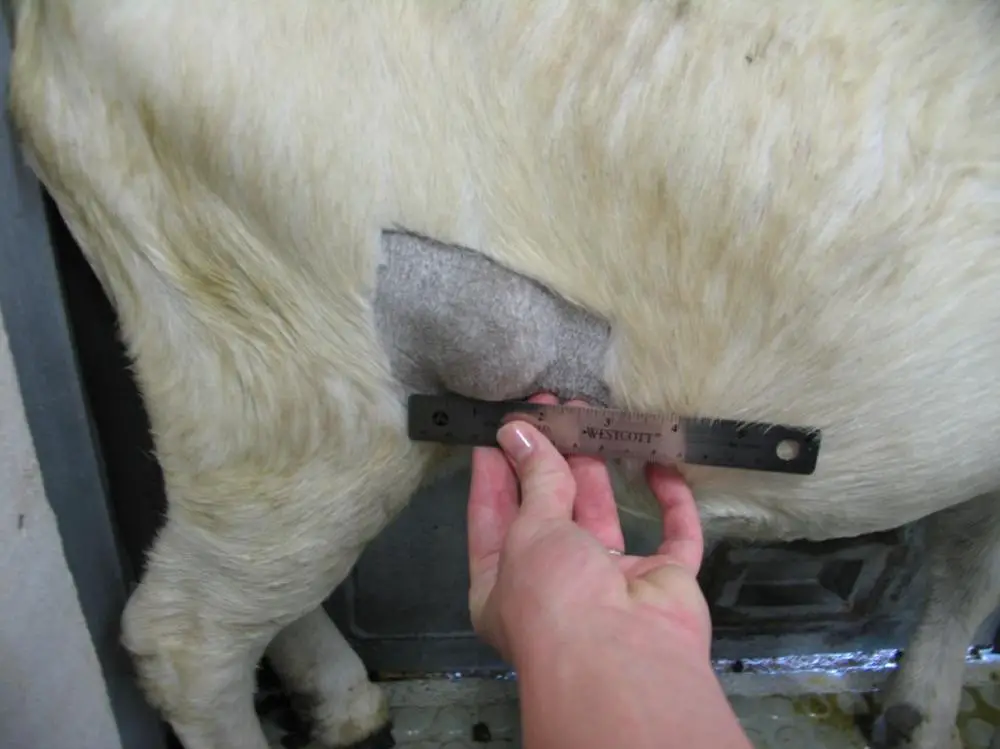
Caseous Lymphadenitis in Goats Symptoms
CL can cause abscesses in the lymph nodes, which can eventually spread to other parts of the goat’s body, including the liver, lungs, and udder. Symptoms of CL in goats include swelling and abscesses in the lymph nodes, decreased appetite, weight loss, and decreased milk production.
Diagnosis of CL is usually made through a combination of clinical signs, bacteriological culture of abscess material, and histopathological examination.
Caseous Lymphadenitis in Goats Treatment
Treatment of CL involves lancing and draining the abscesses, as well as administering antibiotics.
CL Prevention
Prevention of CL is key and is achieved through biosecurity measures, such as quarantine of new animals, proper disposal of infected material, and the use of clean and disinfected equipment. In addition, vaccination of goats against CL can also help reduce the risk of infection. If CL is suspected, it’s important to seek veterinary care promptly to determine the best course of treatment and prevent the spread of the disease to other goats.
Texas A&M AgriLife Extension Official Video: Caseous Lymphadenitis in Goats
In this official video by Texas A&M AgriLife Extension, Jake Thorn, Sheep and Goat Program Specialist, discusses CL in Sheep and Goats. Skip to 0:30 to learn about the most common locations to look for CL abscesses.
Udder Development in Goats
Udder development in goats depends on many factors, including genetics, nutrition, and overall health. Proper nutrition and care can help ensure that a goat’s udder develops properly and remains healthy. If you’re concerned about your goat’s udder development, it’s best to seek veterinary advice.
Photo Credits
- BackyardGoats.IamCountryside website
- Creative Commons
- BoerGoatProfitsGuide.com stock photo license
- ThoughtsfromFrankandFern.Blogspot website
- TheGoatSpot .net website
- Yun Huang Yong “Full Again” on Flickr
- Dr Murtaza Khallil, Animals Knowledge Channel
- Dr. Kevin Washburn. MSD Vet Manual Website


